
A transonic turbofan engine is a type of aircraft engine developed from a turbojet engine. Compared with turbojet, the main feature is that the area of the first stage compressor is much larger, and it is used as an air propeller (fan) to push part of the inhaled air back through the periphery of the jet engine. The engine generally flies at a transonic speed, and the turbofan engine is most suitable for use at a flight speed of 400 to 1,000 kilometers. Therefore, most aircraft engines now use turbofans as a power source.
Advantages: large thrust, high propulsion efficiency, low noise, low fuel consumption rate, and long range of the aircraft.
Disadvantages: The diameter of the fan is large and the windward area is large, so the resistance is large, the structure of the engine is complicated, and the design is difficult.
Comparison of Three Engines
There are mainly three different types of jet engines: turbojets, turboprops, turbofans. please check the difference below:
The exhaust velocity of the turboprop engine is too low, the thrust is limited, and it affects the aircraft to increase the flight speed, so it is necessary to improve the efficiency of the jet engine. Engine efficiency includes thermal efficiency and propulsion efficiency (ratio of engine exhaust speed to flight speed). By increasing the temperature of the gas before the turbine and the boost ratio (speed) of the high-pressure compressor, the thermal efficiency can be improved. Because high-temperature, high-density gas contains more energy. However, under the premise of the same flight speed, increasing the temperature in front of the turbine means increasing the speed of the turbine blades and the compressor on the same shaft, which will naturally increase the exhaust speed. The gas with a fast flow rate loses a lot of kinetic energy when it is discharged.
The exhaust velocity of a general turbojet engine mostly exceeds the speed of sound, and the aircraft flies at a subsonic speed most of the time. Therefore, increasing the thermal power one-sidedly, that is, increasing the temperature before the turbine, will lead to a decline in propulsion efficiency. To improve engine efficiency in an all-round way, it is necessary to resolve the contradiction between thermal efficiency and propulsion efficiency. The beauty of the transonic turbofan engine is that it increases the temperature before the turbine without increasing the exhaust velocity (by increasing the low-speed exhaust flow and reducing the average exhaust velocity).
The structure of the turbofan engine is actually that 1-2 stages of low-pressure (low-speed) turbines are added behind the turbojet engine. These turbines drive a certain number of fans and consume part of the gas exhaust kinetic energy of the turbojet engine (core engine). , thereby further reducing the gas discharge velocity. Part of the airflow inhaled by the fan is sent to the compressor (the term is called "inner channel") like a common jet engine, and the other part is directly discharged from the periphery of the turbojet engine casing ("outer channel"). Therefore, the gas energy of the turbofan engine is distributed to the two exhaust airflows generated by the fan and the combustion chamber respectively. At this time, in order to improve the thermal efficiency and increase the temperature in front of the turbine, it is possible to increase the gas energy through the low-pressure turbine-driven fan to the external duct airflow through appropriate turbine structure and increase the fan diameter, thereby avoiding a large increase in exhaust velocity. In this way, thermal efficiency and propulsion efficiency are balanced, and the efficiency of the engine is greatly improved. High efficiency means low fuel consumption and longer flight range. However, the large fan diameter increases the windward area of the engine, so a turbofan engine with a bypass ratio greater than 0.3 is not suitable for supersonic cruise flight. Although the turbofan engine reduces the exhaust velocity, it does not reduce the thrust, because the (extrinsic) exhaust flow is increased by reducing the exhaust velocity. From the perspective of bypass ratio, turbofan engine is a compromise between turbojet engine and turboprop engine.
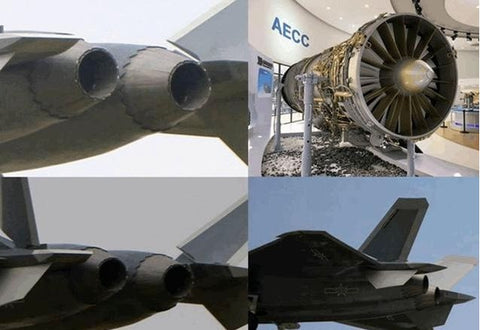
Chinese WS-15 engine model
Is China's WS-15 Turbofan Engine Good or Not?
Speaking of the development of aero engines, the biggest gap between China and the United States was in the research and development model.
The development of China's aero-engines starts with the aircraft and then the engine, and the development of the engine usually starts after the model of the aircraft is determined; while in the United States, the engine is first and then the aircraft. When the aircraft is developed, it already has a choice of engines.
It can be said that the development model of the United States is in line with the development rules of aero-engines. This is because the technical difficulty of aero-engine development is much higher than that of aircraft, and the development time period is much longer than that of aircraft.
The consequences of the two different R&D models are quite different. China often loses its engine because of the discontinuation of aircraft models, and eventually dies. In contrast, the American model is much better. Even if one or two aircraft models are dismantled, they cannot stop investing in engine research and development. Over time, they will naturally become an engine powerhouse. .
As you all know, WS-15, also known as "Emei", is the standard engine of China's stealth fighter J-20. The first public report by official media was in 2017, which disclosed that China's J-20 has been equipped with domestic engines. According to relevant information, it is speculated that the turbofan 15 engine is very advanced and powerful, and it is the world's top level. At present, the most powerful engine in the world is the F135 aero engine developed by the United States. The maximum thrust of the engine is 18 tons. The thrust of the ws15 engine is also 18 tons. The fifth-generation "Emei" engine mentioned here should be the fourth generation, that is, it belongs to the fourth generation with the F119 and F135 engines developed by the United States; while the previous American F110, Russian AL-31, and Chinese WS-10, belong to the third generation.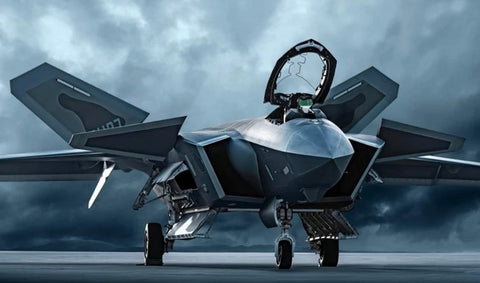
J-20 fighter
In fact, China's aviation industry has a history of 60 years of development. During these 60 years, China has made great breakthroughs. The aerodynamic layout design of fighter jets, electronic systems, weapon systems, radar systems, etc. are relatively close, even Beyond the world's advanced level. Recently, China has also broken the blockade of the West in the field of engines, and has made great breakthroughs.
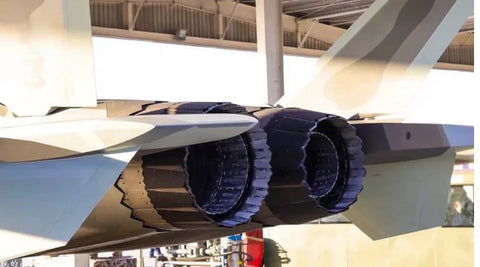
Then this breakthrough classic is the high-performance engine of WS10 and WS15. The ws15 engine is the highest level in China's engine field, and adding the ws15 to the fighter J-20 is a very powerful existence, and it can even be compared with the American f22.
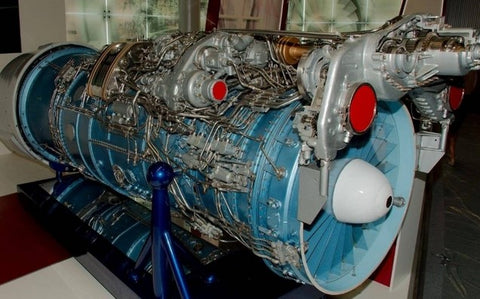
Russian AL-31F engine
The thrust-to-weight ratio of WS15 is 10. The thrust-to-weight ratio of the American F22 is 11.7. From the aspect of thrust-to-weight ratio, the United States is only 1.7 more than ours. In terms of thrust, the thrust of the ws15 engine can reach 16 tons, while the thrust of the United States is only 15.5 tons, so it is better than the United States or even Russia in this respect.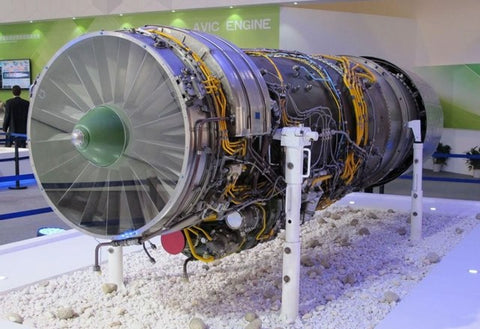
WS-10 series engine
This is a milestone for China's aviation industry. Aviation generators have the characteristics of high difficulty in research and development, long research and development cycles, and strong technical reserves, so they are the arteries of modern industry. Moreover, there are relatively few countries in the world that can control the technology of aviation generators. The countries currently capable of developing high-performance engines are the United States, Russia, France and the United Kingdom. Although China can also develop high-performance engines by itself, it is only during the entry period, and it is temporarily far away from the United States and Russia.
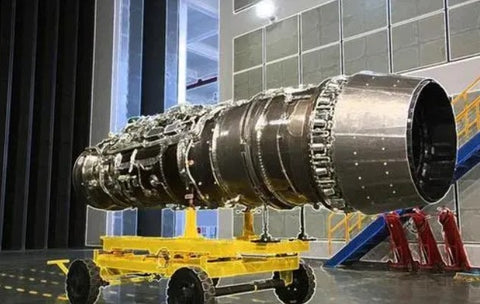
WS-15 Engine Technical Data
Maximum afterburner thrust: 16186.5-18137.3daN
Intermediate thrust: 10522daN
Afterburner fuel consumption rate: 1.98kg/daN/h
Intermediate fuel consumption rate: 0.67kg/daN/h
Thrust-to-weight ratio: 9.7-10.87
Air flow: 138kg/s
Bypass ratio: 0.25
Total boost ratio: 30.5
Turbine inlet temperature: 1850K
Maximum diameter: 1.02m
On Stirlingkit, you can buy a WS-15 turbofan engine scale model kits. This WS15 jet engine kit is great for education, and aircraft hobbyists. The complete package contains more than 150 components that can be easily inserted and screwed together without glue. It takes 1 hour to assemble. The assembled product size is 33x11x14.5cm. The hollow-out jet engine housing gives a view of the interior and the operation of the engine. The comprehensive guide guides you through the construction process step by step and offers a good mix of entertainment and knowledge. It featured the simulated external duct, precise nesting, a detailed shell, and detailed fan blades. It's made of resin and powered by batteries. With this kit, you can build a functional metal model of a J-20 fighter turbofan engine WS-15 in about two hours.
If you prefer the all-metal engine rather than than this 3D-printed plastic engine, Teching all-metal 1/10 DIY turbofan engine model kit would be a good choice for you.

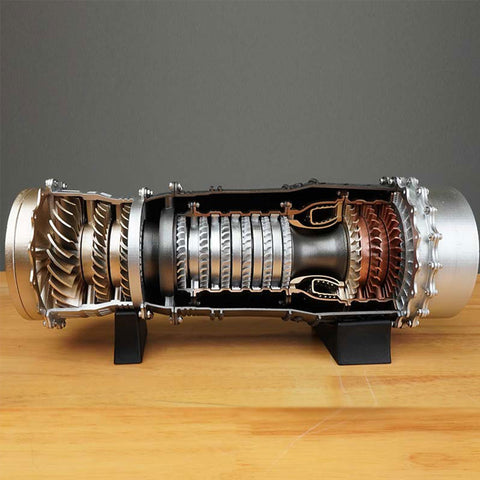
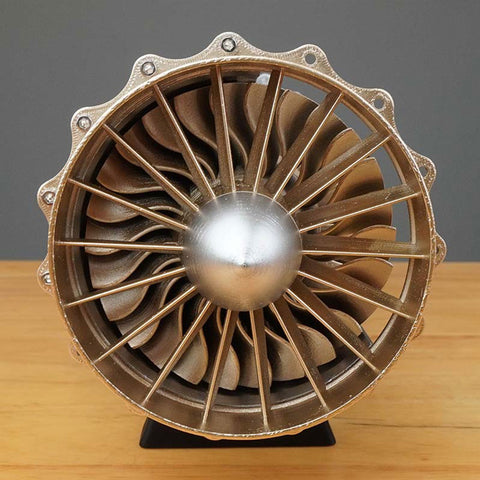
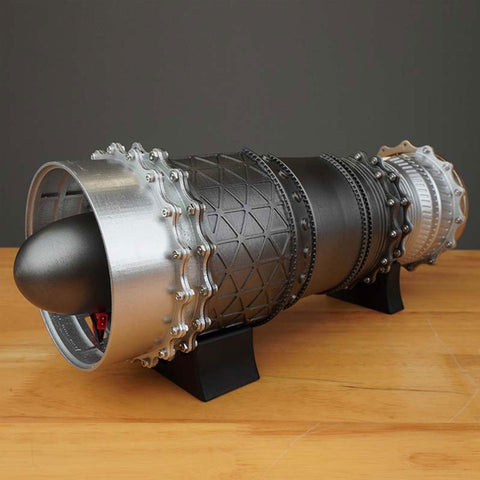






0 comments